In a war renowned for its brutality, the Battle of Verdun (February 21 – December 18, 1916) ranks among the longest and deadliest clashes of World War I. Over 10 months of combat, French forces repelled a major German offensive. By the battle’s end, casualties were estimated at around 400,000 for France and 350,000 for Germany, with a total of approximately 300,000 soldiers killed.
The Germans Designed Verdun as an Attrition Battle
World War I battles often began with tactical objectives only to devolve into bloody stalemates, but most historians believe Verdun was intended as a “meat grinder” from the outset. In late 1915, German General Erich von Falkenhayn wrote a memorandum to Kaiser Wilhelm II, arguing that victory could only be achieved by inflicting massive casualties on the French army, sapping their will to fight and forcing Britain to seek peace.
Rather than aiming to breach or outmaneuver French lines, Falkenhayn planned to lure the French into a trap, compelling them to commit troops to an attrition battle under conditions favoring Germany. “If they do so,” he wrote, “the forces of France will bleed to death.” Falkenhayn dubbed this ruthless strategy Operation Gericht—a term translatable as “judgment” or “place of execution.”
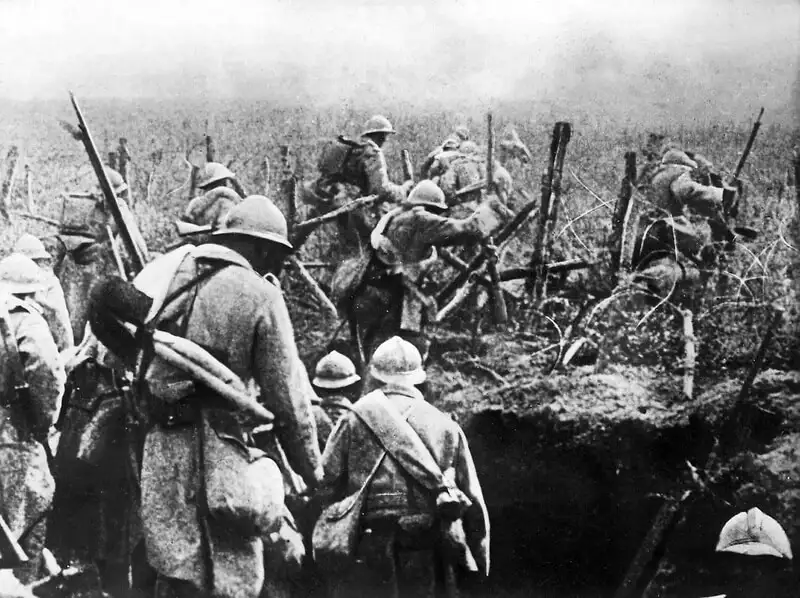
Verdun Was Crucial to Both Sides
The Germans targeted Verdun not only because it lay within a salient on the Western Front but also due to its profound historical and political significance. An ancient city, Verdun was one of the last strongholds to fall during France’s humiliating defeat in the Franco-Prussian War of 1870-71, after which it was fortified into one of the most heavily defended fortresses along the German border.
Falkenhayn knew any threat to Verdun would provoke fierce resistance, as its loss would devastate French morale. Intriguingly, the city also held sentimental value for Germans due to the Treaty of Verdun in 843, which divided the Carolingian Empire and laid the groundwork for what would become modern Germany.
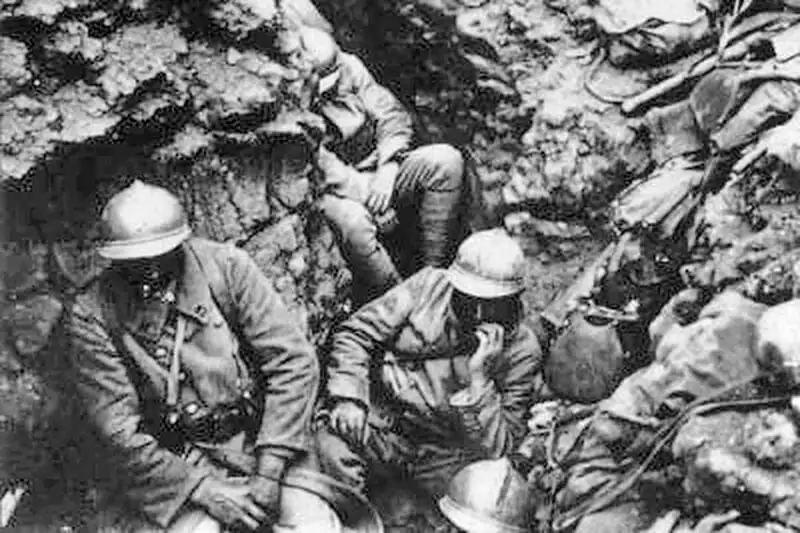
The Attack Caught the French Off Guard
Germany’s preparations for Verdun involved one of the largest troop and equipment mobilizations of World War I. Leveraging rugged terrain and a strong air force presence to mask their movements, Falkenhayn’s army spent seven weeks building new railways, installing fortified concrete bunkers for troops, and amassing over 1,200 artillery pieces.
An astonishing 2.5 million artillery shells were transported to the front by 1,300 ammunition trains. Despite this massive engineering effort unfolding in plain sight, the French were unprepared for a German assault. The forts around Verdun had seen little action early in the war, and many soldiers and guns had been redeployed to more active combat zones.
The French made some last-minute preparations when bad weather delayed the German attack, but they remained on the defensive in the battle’s early stages. By February 24—just three days after the initial bombardment—German forces had advanced several miles and overrun the first two French defensive lines.
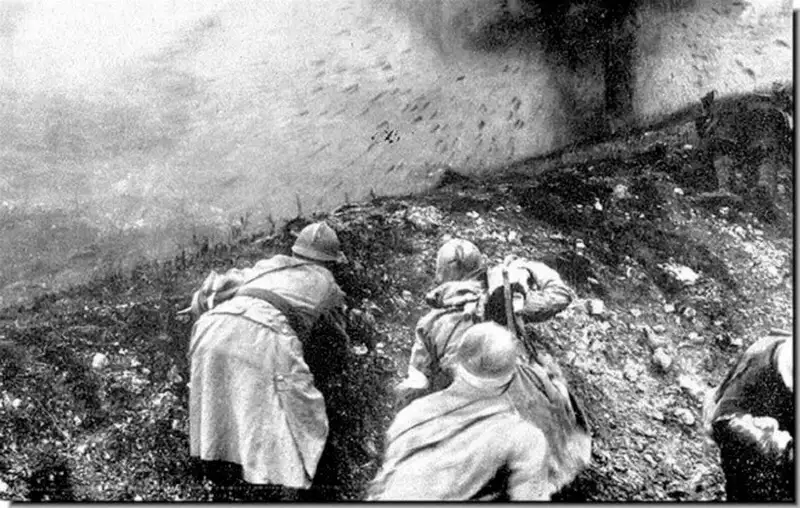
The Germans Captured a French Fort Without Firing a Shot
On February 25, German troops approached Fort Douaumont, the largest of dozens of French forts surrounding Verdun. Under normal conditions, Douaumont was nearly impregnable, but its garrison had been reduced to just 57 soldiers in the months before the battle.
After approaching via an unguarded passage, a small German unit led by Lieutenant Eugen Radtke easily infiltrated the fort’s underground chambers, capturing French soldiers one by one without resistance. They swiftly took the entire fort without suffering casualties or firing a single shot.
News of Douaumont’s capture sparked spontaneous celebrations in Germany, even prompting school closures. However, it dealt a severe blow to the already faltering morale of the French army. It took eight months and tens of thousands of casualties for the French to reclaim the fort in October 1916.
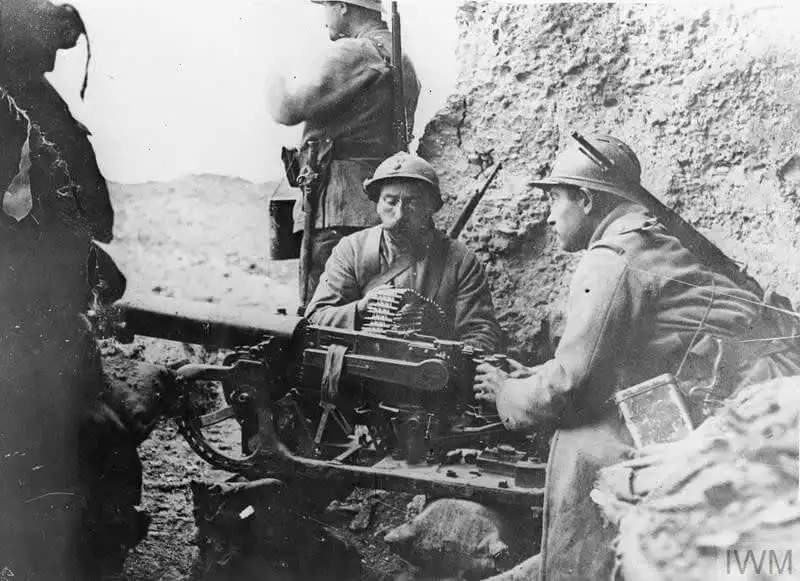
The French Held Verdun Thanks to the “Sacred Way”
Lacking safe railways and under constant enemy bombardment, the French relied on a single 20-foot-wide (about 6-meter) road to supply Verdun. After taking command of French forces in late February 1916, General Philippe Pétain implemented measures to keep this vital lifeline operational. French soldiers were mobilized to lay gravel and repair the road, while a fleet of 3,000 military and civilian trucks was deployed for transport.
In just one week, over 190,000 troops and 25,000 tons of ammunition, food, and supplies reached the front. Pétain also used the road to rotate more than 40 divisions in and out of the Verdun area, keeping troops fresh and mitigating the effects of shell-shock. Later named “La Voie Sacrée” (“The Sacred Way”), the road is commemorated for its critical role in the war.

Verdun Saw Devastating Artillery Bombardment
Of the 800,000 casualties at Verdun, an estimated 70% were caused by artillery fire. The Germans unleashed over 2 million shells in their opening barrage—an unprecedented number at the time—and both sides fired a total of 40 to 60 million shells over the 10-month battle.
The sound of the bombardments carried up to 100 miles (about 160 kilometers), and soldiers described some heavily shelled hills erupting like volcanoes. Survivors often suffered severe shell-shock from the relentless noise.
“One unit of 175 men in my company went there,” a French soldier wrote of the German artillery assault at Verdun. “I left with 34, some of them completely mad… they no longer responded when I spoke to them.”

The French Air Force at Verdun Included American Pilots
Early in the Battle of Verdun, Germany dominated the skies, but the tide turned when France assembled a force of 226 aircraft and organized them into the war’s first fighter squadrons. One of the most famous was the Lafayette Escadrille, composed primarily of American pilots.
Formed in April 1916—a year before the U.S. officially entered the war—the unit included 38 American pilots, many of whom had previously joined the French Foreign Legion. The Lafayette Escadrille stood out with its Native American warrior emblem on Nieuport planes and two lion cub mascots named “Whiskey” and “Soda.”
Beyond its flair, the squadron proved effective, achieving about 36 aerial victories, mostly during its five months of combat at Verdun.

The Battle of the Somme May Have Shifted the Tide at Verdun
The Battle of the Somme, one of the few World War I engagements rivaling Verdun in bloodshed, may have alleviated pressure on the French army just as it neared collapse. Responding to an urgent plea from French General Joseph Joffre that his forces were about to “cease to exist,” the Allies launched their bloody offensive at the Somme River on July 1, 1916.
Combined with Russia’s Brusilov Offensive, which captured hundreds of thousands of Austro-Hungarian troops on the Eastern Front, the attack forced Germany to divert soldiers and artillery from Verdun at a critical moment. Though Germany continued its assaults on Verdun, a failed offensive in July cost them the initiative, which shifted to the French.
The French then mounted a powerful counteroffensive. By December, when the battle ended, they had recaptured lost forts and pushed the Germans back to their starting positions.
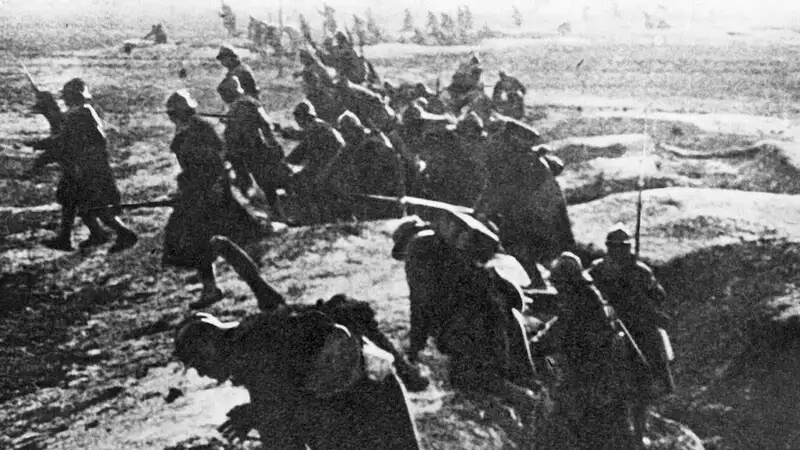
The Battle Left Nine French Villages in Ruins
Ten months of intense shelling devastated the city of Verdun and completely destroyed nearby villages, including Beaumont, Bezonvaux, Cumières, Douaumont, Fleury, Haumont, Louvemont, Ornes, and Vaux.
The sheer number of bodies and unexploded ordnance buried in the ground made these “destroyed villages” (“villages détruits”) impossible to rebuild, though they remain on France’s maps and are managed by unelected volunteer mayors. Today, aside from scattered debris, all that remains are signs marking the former locations of main roads and buildings.
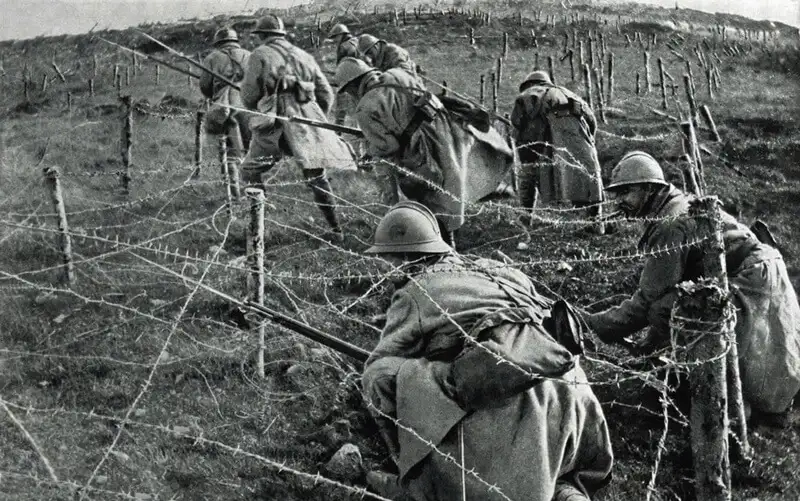
Unidentified Remains from Verdun Are Preserved in a Battlefield Ossuary
Though Germany aimed to “bleed France dry,” Verdun inflicted nearly equal losses on both sides. Germany suffered 143,000 deaths (out of 337,000 total casualties), while France lost 162,440 soldiers (out of 377,231 casualties).
Because artillery blasts buried many of the fallen or rendered remains unidentifiable, most recovered bodies were later interred at the Douaumont Ossuary, a solemn memorial containing the bones of at least 130,000 French and German soldiers.
Conclusion
The Battle of Verdun, spanning 10 months in 1916, is not only a symbol of World War I’s brutality but also a lesson in attrition warfare and the immense sacrifices of both sides. With over 800,000 casualties and numerous villages obliterated, it left an indelible mark on history with immeasurable loss. Pywar hopes this article has deepened your understanding of this battle—don’t forget to explore more articles on world war history!
Translated by: Le Tuan
Source: History.com – 10 Things You May Not Know About the Battle of Verdun



